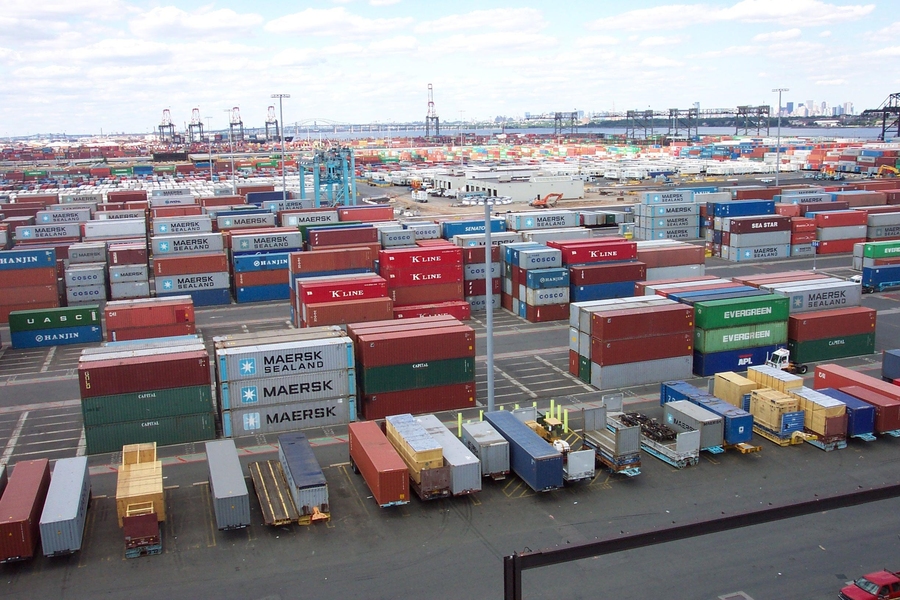China is the world’s second-largest national economy and largest exporter. This growth has come at a cost, with energy demands and associated environmental damages on the rise. China is now the world leader in consumer energy use and carbon dioxide emissions. As countries around the globe work to reduce carbon emissions, policymakers are interested in measuring and ultimately reducing emissions associated with the relocation of industry and manufacturing overseas.
In a study released in the March issue of Energy Economics, researchers at Tsinghua University and MIT developed a new model to determine whether policy proposals could reduce carbon emissions associated with goods exported from China. They found that taxes on energy-intensive exports and policies encouraging the Chinese economy to shift from industry to services are ineffective in significantly reducing total carbon dioxide emissions, because the same goods will still be produced elsewhere.
“Developed countries are discussing the possibility of imposing a trade tariff on emissions embodied in imported goods in an effort to prevent the relocation of high-emitting industries overseas and to shore up domestic competitiveness,” says Tianyu Qi, a PhD student at Tsinghua University and the lead author of the study. “It is important to understand how vulnerable the Chinese economy is to such a policy.”
Approximately 22 percent of China’s carbon dioxide emissions are the result of net exports. These emissions are categorized as “trade-embodied” emissions because they are produced as a result of goods and services that are exported.
In their analysis, the researchers considered the impacts of two policies that are similar to measures included in China’s 12th five-year plan (2011-2015). The first policy is a tax on energy-intensive exports, and the second policy involves incentivizing a shift in China’s economy away from industry and toward services.
“In exploring these policies — both of which are advertised as carbon-reducing strategies — we find that neither would have a significant impact on total global emissions, because reduced production in China is partially offset by increased production elsewhere,” says Qi, also a researcher with the MIT-Tsinghua China Energy and Climate Project.
If policymakers want to simply reduce emissions associated with China’s trade, the researchers suggest policies that support economic structural changes.
“A policy that targets the expansion of domestic demand, along with a shift toward services, is more effective at reducing China’s export-embodied CO2 emissions,” says Valerie Karplus, a coauthor of the study and the director of the Tsinghua-MIT China Energy and Climate Project. “This will in turn reduce China’s exposure to potential tariffs on embodied carbon imposed overseas.”
Karplus explains that such a move is not a long-term solution to reducing carbon dioxide emissions, and that it would ultimately shift production of many industrial products to other nations — shifting emissions along with them.
The researchers also find that the EU, the U.S., and Japan are the largest net recipients of trade-embodied carbon dioxide emissions. In addition, the researchers expected energy-intensive industries such as steel and aluminum production to be responsible for most of the carbon dioxide emissions associated with China’s trade, but instead they found the production of machinery and equipment to be the main culprit.
“This is because China exports large volumes of machinery and equipment products, such as refrigerators and televisions, even though commodities such as aluminum and steel are more CO2-intensive than these products,” says Niven Winchester, an environmental economist in MIT’s Joint Program on the Science and Policy of Global Change and a coauthor of the study.
To analyze the impact of policies on carbon dioxide emissions, the MIT-Tsinghua China Energy and Climate Project developed a new model called the China-in-Global Energy Model, or C-GEM. C-GEM disaggregates China’s 30 provinces and details the entire energy system. The model also includes global trade data to measure the interactions between China and the global economy.
The Tsinghua-MIT China Energy and Climate Project is a collaborative effort between the MIT Joint Program on the Science and Policy of Global Change and the Institute for Energy, Environment and Economy at Tsinghua University in Beijing, China. This group is working to analyze the impact of existing and proposed energy and climate policies in China on technology, energy use, the environment, and economic welfare.
Tsinghua, MIT researchers find China’s plan to restructure the economy will have limited impact on global carbon emissions associated with the production and trade of goods.
Publication Date:

Caption:
Approximately 22 percent of China’s carbon dioxide emissions are the result of net exports.
Credits:
Photo courtesy of NOAA





